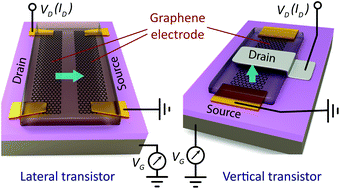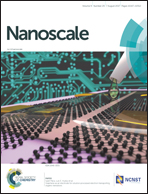Graphene as an electrode for solution-processed electron-transporting organic transistors†
Abstract
Organic field-effect transistors (OFETs) are fundamental building blocks for plastic electronics such as organic photovoltaics or bendable displays with organic light emitting diodes, and radio-frequency identification (RFID) tags. A key part in the performance of OFET is the organic material constituting the channel. OFETs based on solution-processed polymers represent a new class of organic electronic devices. Recent developments in upscale solution-processed polymers have advanced towards high throughput, low-cost, and environmentally friendly materials for high-performance applications. Together with the integration of high performance materials, another enduring challenge in OFET development is the improvement and control of the injection of charge carriers. Graphene, a two-dimensional layer of covalently bonded carbon atoms, is steadily making progress into applications relying on van der Waals heterointerfaces with organic semiconductors. Here, we demonstrate the versatile operation of solution-processed organic transistors both in lateral and vertical geometries by exploiting the weak-screening effect and work function modulation properties of graphene electrodes. Our results demonstrate a general strategy for overcoming traditional noble metal electrodes and to integrate graphene with solution-processed Polyera ActiveInk™ N2200 polymer transistors for high-performance devices suitable for future plastic electronics.



 Please wait while we load your content...
Please wait while we load your content...